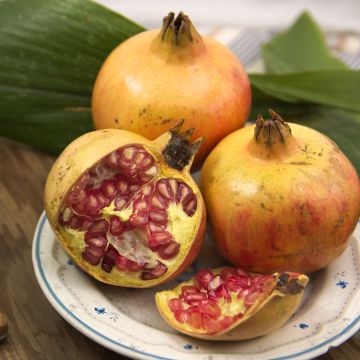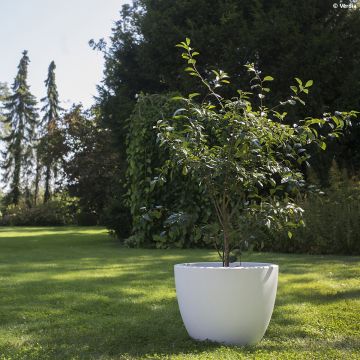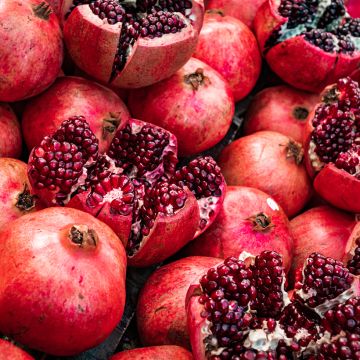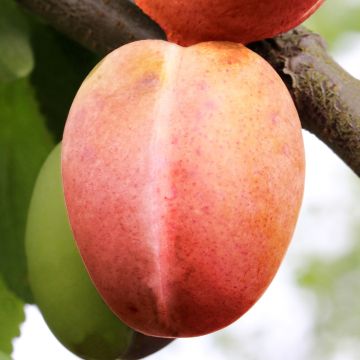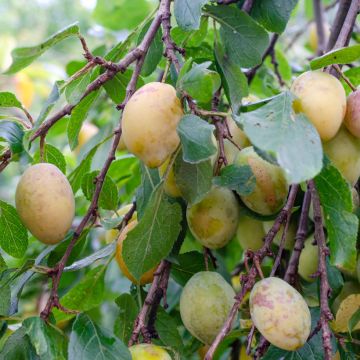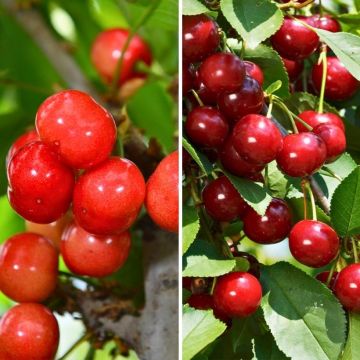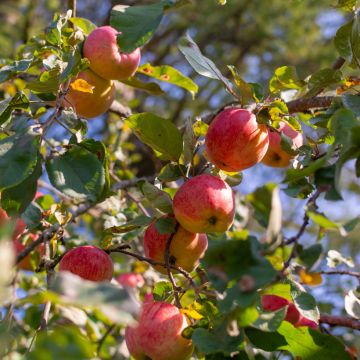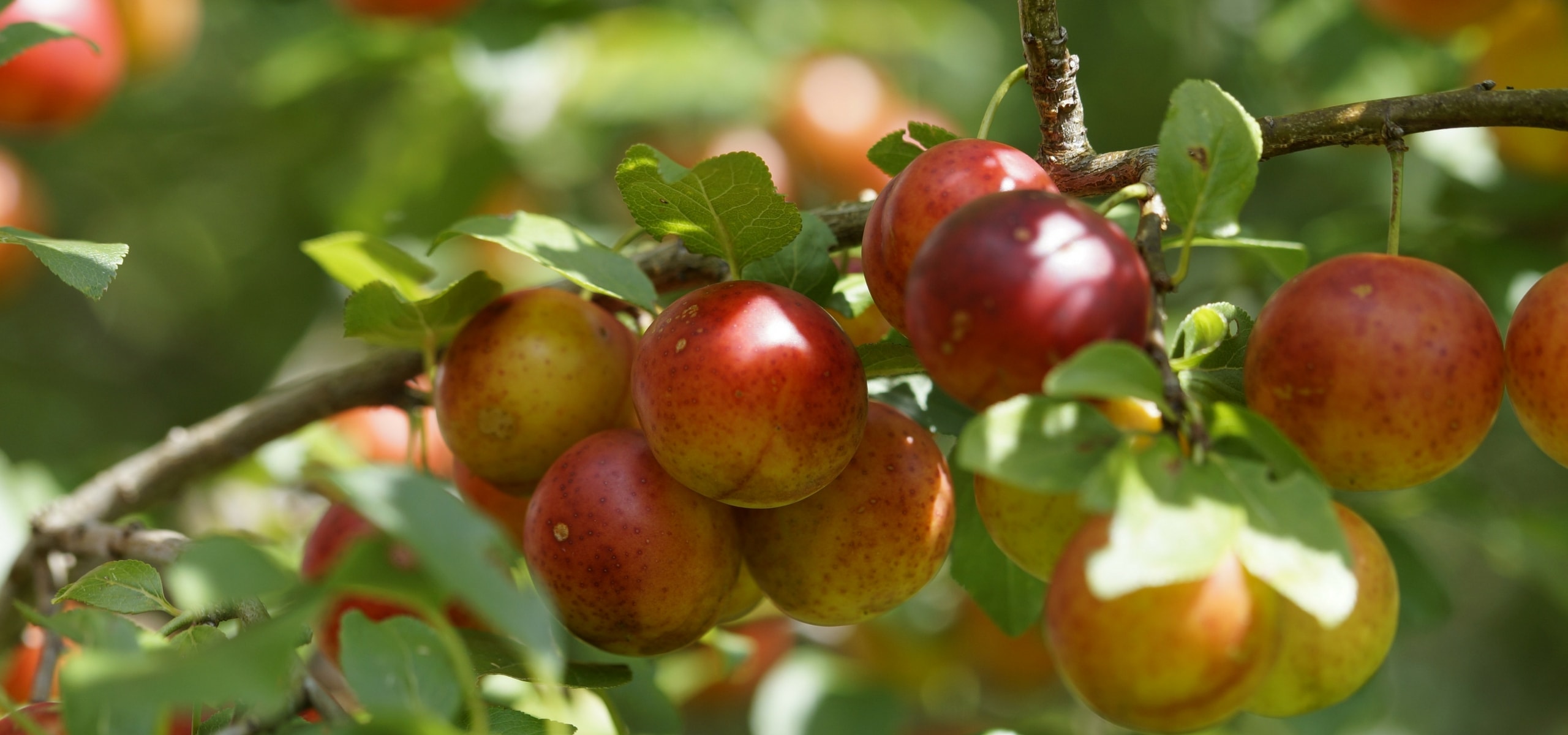
How to plant a fruit tree?
in the garden or in the orchard
Contents
It is well known that fruits are much better when they come from the garden! To achieve this, the first thing to do is to plant a fruit tree: apple tree, pear tree, peach tree, cherry tree… In addition to enjoying their fruits, fruit trees will beautify your garden by adding a splash of colour. Discover all our tips for successfully planting them: how to choose the ideal location, when and how to plant them for optimal growth. We also provide you with some tips for maintaining them and promoting their growth. So, don’t hesitate any longer and get started on planting a fruit tree!
When to plant a fruit tree?
Bare-root fruit trees are ideally planted in autumn or winter, outside of frost periods. For young plants in containers, it is possible to plant all year round with more regular watering in spring and summer to aid establishment.
Where to plant a fruit tree?
Fruit trees need a sunny location and appreciate positions sheltered from cold winds. Choose a spot where the soil remains cool in summer but without excess moisture during winter. Additionally, consider the dimensions of the tree at maturity, which vary depending on the varieties and the chosen shape. Also take into account the characteristics of the varieties: some fruit trees are self-fertile and can be planted alone, while others require the presence of another fruit tree nearby to ensure good pollination. Finally, select a location that is easily accessible so that harvesting is enjoyable or simply to be able to sit under the tree during the summer heat.
Fruit trees prefer light, well-drained soils, with a neutral or slightly acidic tendency for most varieties. At the time of planting, we recommend enriching the garden soil with compost, ground horn, or potting soil. In heavy soils, add gravel to the soil to improve drainage.
Discover other Fruit trees by variety
View all →Available in 1 sizes
Available in 1 sizes
Available in 2 sizes
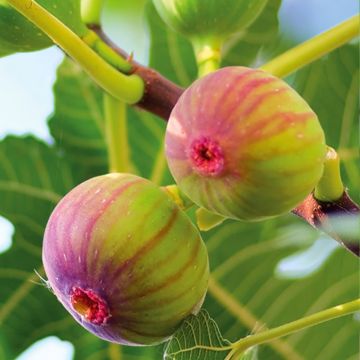
Available in 1 sizes
Available in 1 sizes
Available in 1 sizes
Available in 1 sizes
Available in 2 sizes
Available in 0 sizes
Available in 1 sizes
How to plant fruit trees?
To plant a fruit tree with bare roots:
- Dig a hole 50 cm deep and wide using a shovel, if possible a week or two before planting. Be sure to place the subsoil on one side and the topsoil on the other side.
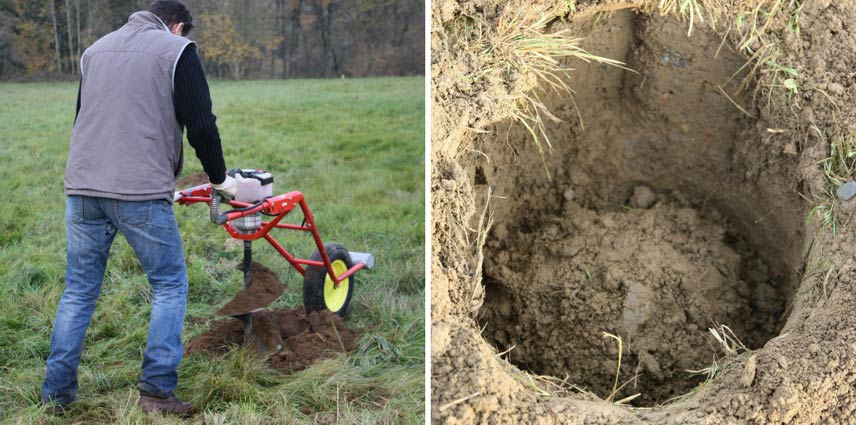
If you have many trees to plant, feel free to rent a auger – Once the planting hole is dug and if you are planting with bare roots, create a small mound to place your young plant on.
- Mix crushed horn and well-matured compost or potting soil with the subsoil and pour this mixture into the bottom of the planting hole.
- Install a sturdy stake of your choice.
- For container plants, soak the root ball for a few moments before planting.
- For trees with bare roots, trim the roots if necessary to create clean cuts, then dip them in a pralin to prevent air pockets from forming between the roots and the soil. Pralin is prepared by mixing 1/3 very fine soil or potting soil with 1/3 cow dung or compost and 1/3 rainwater; otherwise, you can also find it in our online shop: Pralin Or Brun.
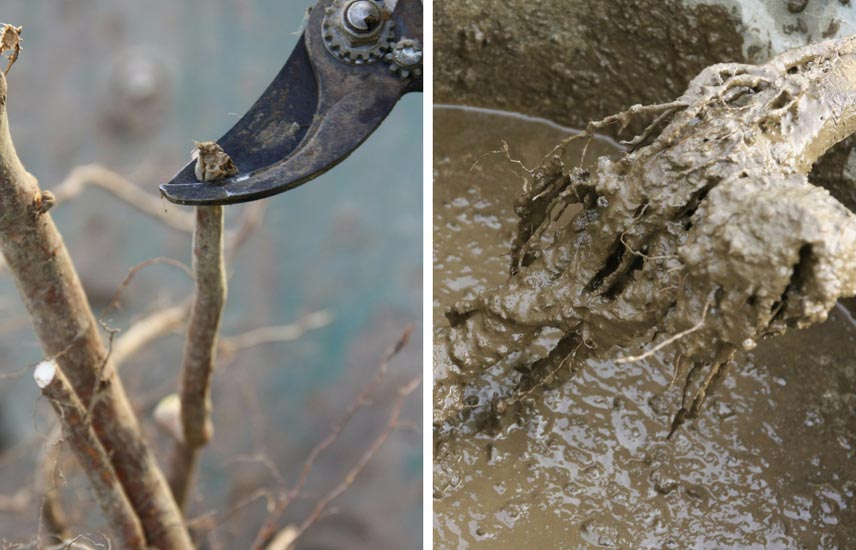
Making clean cuts with a pruning shear and pralinaging the roots are two actions that significantly improve the establishment of fruit trees
- Then place the young plant, ensuring that the grafting point (the swelling above the roots) is just above the soil surface, or slightly elevated if the soil is very wet).
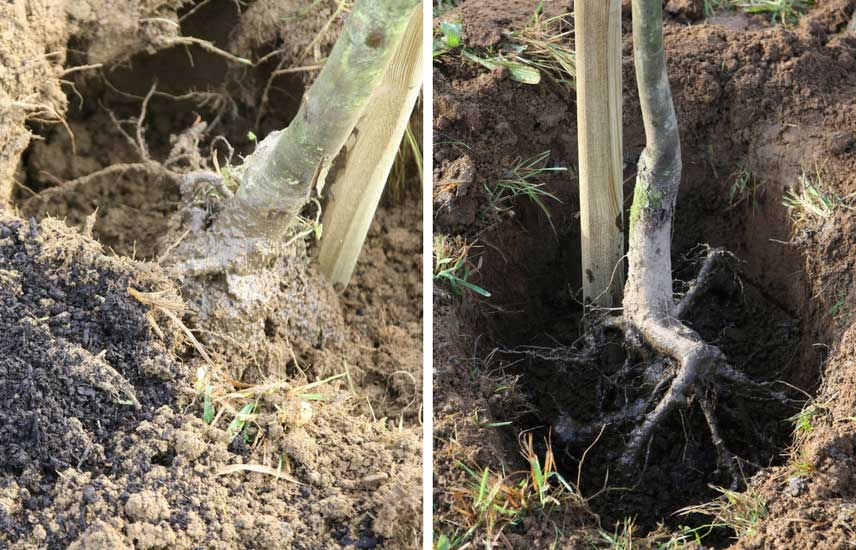
Fertilisation and placement of the fruit tree
- Cover with topsoil and compact well. In dry soil, form a basin around the young plant and water generously (about 10 litres).
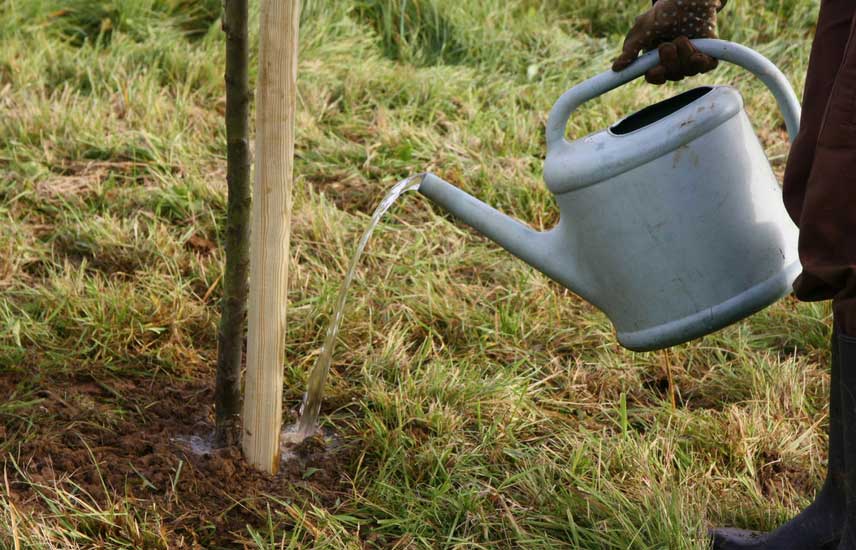
Don’t hesitate to water generously, even in winter!
- Attach the stake to the young plant, crossing the tie in the shape of an 8, so that the stake does not touch the trunk. Use a soft tie or a tree collar that will not harm your tree. Find our tree ties in our shop.
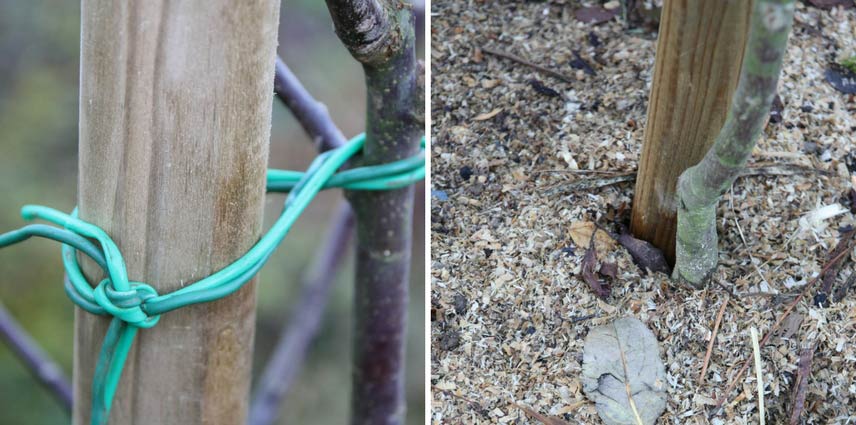
Staking, forming an 8 with a soft tie / mulching the base of the fruit tree
Once your fruit tree is planted:
- Water and monitor the water supply during the first year after planting, especially in summer and autumn.
- Mulch at the base to retain moisture in summer.
When and how to prune your fruit trees?
Pip trees are pruned in winter (when frost is not present) until early spring, while stone trees are pruned in early autumn.
For this, use a pruning shear or a branch cutter. Always remember to disinfect your tools to prevent the transmission of disease from one plant to another.
- Remove dead branches and those that cross over each other to allow air and light to circulate within the tree.
- Top the tall branches to balance the tree’s branches and favour horizontal branches.
- To prevent the appearance of fungi or diseases, you can coat the pruning wounds with Solabiol healing paste or clay-type healing paste.
- In June-July, thin out the pre-formed fruit clusters if necessary by picking excess fruits to increase the size of the fruits and prevent branches from breaking under the weight of the fruits.
What care should be given to fruit trees?
In winter, add a shovel of wood ash all around the trunk. Rich in potash, this addition helps to stimulate flowering and increase fruit yields.
In spring, apply well-matured compost by scratching it into the surface, taking care not to damage the roots.
In case of an aphid attack, spray a mixture of water and black soap.
- Subscribe!
- Contents































